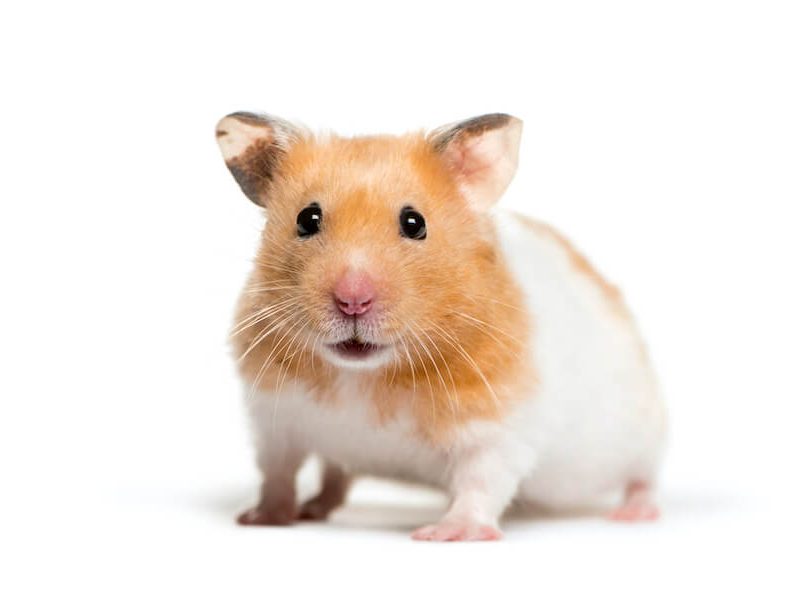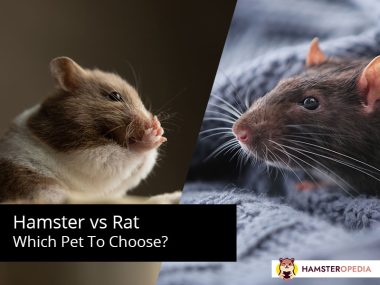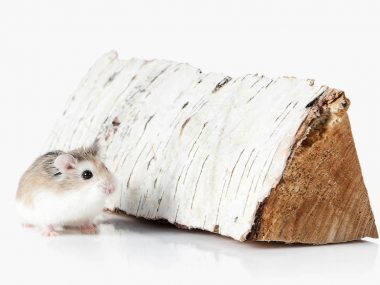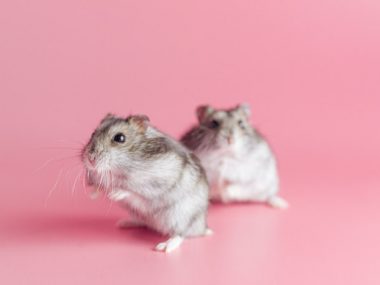How does a hotdog-sized rodent from a Middle Eastern desert make its way into the homes of billions around the world? If you’re considering getting a hamster, you’ll want to know more about what makes the Syrian hamster one of the most common pets!
Table of Contents
What Is A Syrian Hamster?
Syrian hamsters (Mesocricetus auratus) are known as “Common” or “Golden” hamsters. Native to the Middle East, these large-sized hamsters have become a common household pet throughout the world. It’s not uncommon to find Syrians kept as classroom pets or companions in a work environment. Because they are absolutely adorable!
Are There Different Types Of Syrian Hamsters?
There aren’t necessarily “types” of Syrians, but rather varieties in color and coat length. The most common variety is your typical short-hair light cinnamon-colored Syrian, which is referred to as a “Golden.” Then you have long-haired Syrians referred to as “Teddy Bears.” Long-hair Syrians can have either straight fur or wavy, curly-looking fur.
So, if you purchase a “Common,” “Golden,” or “Teddy Bear” hamster, they are all Syrian hamsters belonging to one species.
Where Do Syrian Hamsters Come From?
As its name implies, Syrian hamsters are native to Syria and parts of the Middle East. They are predominantly found in the Aleppo Plateau of Syria. The Syrian species may not have the elite ancestral lineage tracing like their dwarf counterparts but do have a fascinating story behind their existence.
The species was closely studied in the 1700s by naturalist Dr. Alexander Russell who recorded his findings in his scholarly primary book edition entitled “The Natural History of Aleppo.“Although Dr. Russell identified Syrian hamsters, it wasn’t until 1839 that the species was officially recorded by zoologist/curator George Robert Waterhouse.
Today, you’ll find wild Syrian hamsters thriving in hot, arid regions where they form deep tunnel systems to burrow and sleep in during the hot day. Come nightfall, the hamsters come to life and leave their underground homes to forage for food.
Syrian Hamster Characteristics and Traits
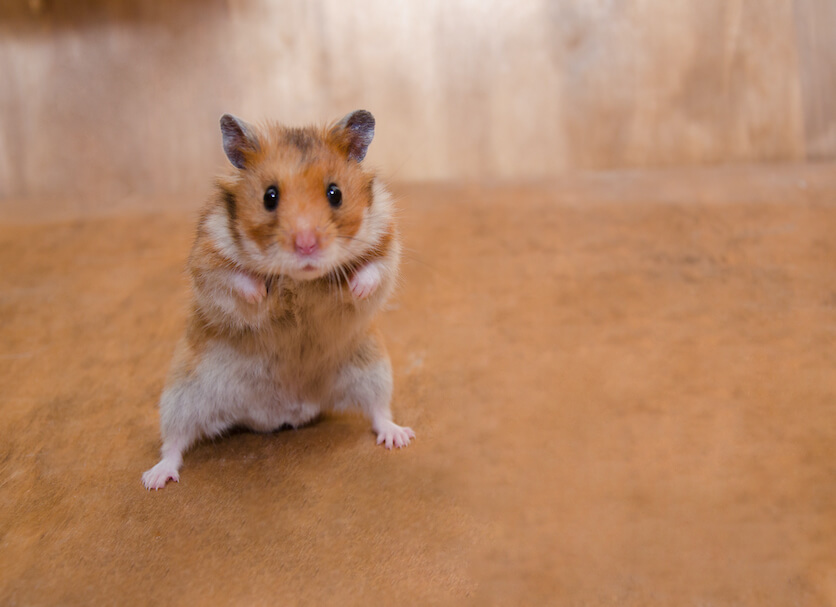
So, is a Syrian hamster a good pet, and how do you know if it’s a good fit for you? In trying to decide whether or not to purchase one of these hamsters, we have everything you need to know to guide your decision.
Syrian Hamster At A Glance
- Coat: short or long
- Colors: yellow, rust, orange, black, white, cream, gray/silver
- Patterns: roan, banded, dominant spot, tortoiseshell
- Self or Agouti: self, agouti
- Eyes: black, black-red, black-blue, ruby, pink, heterochromatic
- Size: 6-8″, 4-5 oz.
- Lifespan: 18 months to 3 years
- Diet: omnivore
- Sexual maturation: 30 days
- Temperament: docile/sweet if handled as pups
- Level of care: moderate (not intended as a starter pet)
Syrian Hamster Coat Characteristics
Syrian hamster colors vary, as does the length of their fur. It’s the coat features that make this hamster species attractive and interesting. The coat of a Syrian tends to be very dense and thick, and when you add longer hair to that equation, they can look cuddly. It’s this cuddly look that sways potential hamster buyers with children to get one.
In addition to the coat length, Syrians may be multi-colored with beautiful color patterns that give each hamster its unique and quirky looks.
Eyes, Ears, and Tail Characteristics
If their cuddly fur got you caught into looking more into Syrian hamsters, there’s another feature that will “seal the deal” for you. These sweet hamsters may have beautiful red or pink eyes. The pink eyes look like two little rubies gleaming back at you. Typically, a hamster’s coat color and genetics determine the color of its eyes. If you manage to find a Syrian with two different colored eyes (black and red), you’ve managed to find a real gem. Some do exist!
The tail of a Syrian hamster is nubby, giving it the appearance of having no tail at all. Located near the tail are two scent glands that are used to mark their territory. Males tend to mark more than females.
Lastly, those little ears on one of these hamsters are perky and always listening. Depending on the color and pattern of their coat, their ears may vary in coloring as well.
Syrian Hamster Lifespan
Hamster species as a whole have a short lifespan, so before getting your hamster, it helps to know (and to teach your children) that “Snowball” doesn’t live very long, and after a few years, they die. The average longevity of any hamster under the very best conditions is about two years.
Other factors affect longevity, such as:
- Injury caused by a hamster jumping out of your hands.
- Being allowed to roam outside the cage and having access to dangerous things (chewing on wires, eating the wrong thing, etc.)
- Allowing pets (dogs, cats) or small children to have access to the hamster.
How Big Will A Syrian Hamster Get?
A Syrian hamster averages about 6″ long. However, they can get as big as 8 inches in some cases. Overall, a Syrian hamster can grow to be about the size of a hotdog.
Syrian Hamster Behavior
Syrian hamsters are much more docile compared to their dwarf counterparts. However, Syrian or not, hamsters must be properly handled/tamed to become accustomed to being touched, held, and having humans near them. With time, your hamster will come to know your voice and your scent.
Do Syrian Hamsters Like To Be Held?
As much as we want to hold our new hamster, it’s best to allow them time to get used to you and its environment first. With patience and ample handling, your hamster will grow to love being held. If at any time it feels threatened, it will jump out of your hands.
Are Syrian Hamsters Cuddly?
Syrian hamsters are known as being friendly. Any hamster is only going to exude cuddliness if they are properly handled/tamed and comfortable with its handler.
Do Syrian Hamsters Bite?
If a Syrian hamster is not tamed, handled enough, or feels threatened, it will assuredly bite. Waking a sleeping hamster, whether tame or not, can result in a bite as well.
How To Tame A Syrian Hamster
Any hamster species must go through handling (taming) once you bring it home. Never bring a new hamster home with the expectation you will start cuddling and holding it right off the bat. It’s going to take time for it to get used to you. You must earn its trust.
Bringing Your Hamster Home
- Place your hamster into its cage and avoid disturbing it for a few days (except when feeding/watering.) Keep small children and pets away from the cage.
- Talk to your hamster softly to allow it to get used to your voice.
- By putting one of your used socks or something small (with your scent) on it inside the cage, your hamster gets acquainted with your scent.
- After about three days, you can begin handling it.
Daily Handling/Taming
- Handling should always be done in an area where your hamster cannot escape or hide. You can use things such as a child’s wading pool, baby bassinet, enclosed laundry basket, etc.) to place the hamster in to handle.
- Sit on the floor when handling to prevent your injury caused by a hamster jumping out of your hands at greater heights.
- Handwashing before and after is a must.
- Talk to your hamster during the handling, especially each time before you reach into their cage to pick them up.
- Handling should be done for no more than 15 minutes each time and in the late evenings (because hamsters are nocturnal and sleep during the day.)
Syrian Hamster Care
Your Syrian’s care begins before it arrives home. There are a few things to know before getting one and in setting up to bring one home.
Syrian Hamster Cages
Syrians are larger hamsters, so they should have a cage to accommodate them comfortably and have room for accessories.
Must-Have Accessories
- Nesting box
- Bedding (cedar and pine shavings should never be used)
- Wheel
- Water bottle
- Food bowl
- Toys
Cage Placement
The cage should never be placed in a cold, drafty, hot, noisy area. Avoid putting a cage near air vents, windows, exterior doors, appliances, TVs, stereo speakers, etc. The room where the cage is placed should be warm (64-79 degrees (F) (17-26 C.) A sturdy base/surface is a must to go under the cage.
Syrian Hamster Diet
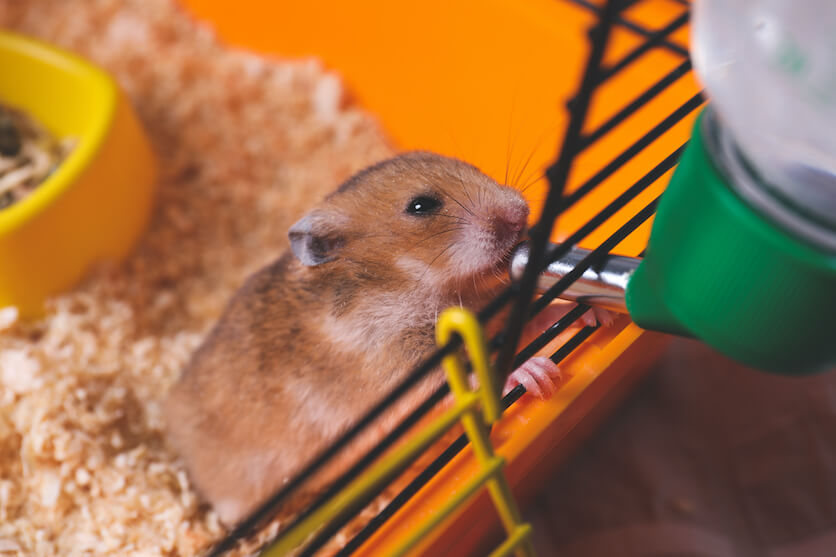
Syrian hamsters can be fed good quality commercial hamster food to meet their daily nutritional needs. The occasional treat is something they enjoy.
Toxic Foods To Avoid:
- Alcohol
- Caffeine (chocolate, tea, coffee, etc.)
- Citrus (oranges, lemons, limes, grapefruit, etc.)
- Nightshade vegetables (potatoes, tomatoes)
- Onions
- Garlic
Is It Better To Get A Male Or Female Syrian Hamster?
Female hamsters are a bit crankier and tend to be more prone to bite. Syrian females are highly territorial and aggressive when it comes to another hamster (baby or adult) being in their space. Male Syrians, on the other hand, are more docile compared to females. However, males mark their territory far more than a female. This can result in a smelly cage and smelly male Syrian hamster. Syrians are solitary and do not do well with a cagemate.
How Much Does A Syrian Hamster Cost?
- Syrian hamster: $12 – $30 (USD)
- Cage: $15 – $300 (USD)
- Accessories (wheel, nesting box, bedding:) $30 – $65 (USD)
- Food: $5 – $15 (USD)
Syrians Are Seriously Worthy Of Considering
For those seeking a small pet and who will responsibly invest their time in taming and caring for one, a Syrian hamster makes a great option. Do your homework before getting one, so you are aware of the scope of care and any quirks the species may have.
